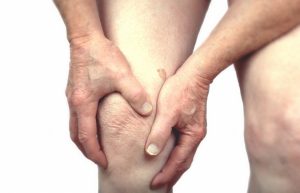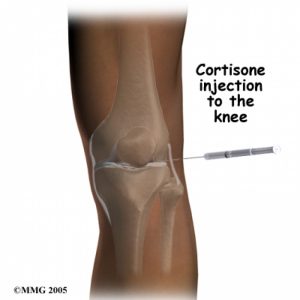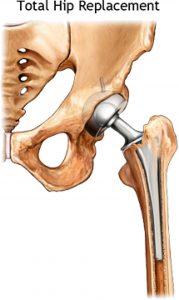 One of the most common questions I get asked as an orthopaedic surgeon is, how do I prevent arthritis?
One of the most common questions I get asked as an orthopaedic surgeon is, how do I prevent arthritis?
Osteoarthritis (OA) is the most common joint disorder in the United States. Symptomatic knee OA occurs in 10% men and 13% in women aged 60 years or older.
The number of people affected with symptomatic OA is likely to increase due to the aging of the population and the obesity epidemic. Although we can’t prevent osteoarthritis altogether, we can lower the risk factors that cause osteoarthritis. Here are some helpful tips:
1. Lose weight, or at least avoid gaining. Extra pounds are awful on joints: They increase the burden on them, and have a destructive metabolic effect. A chemical related to obesity upsets the balance between the buildup and breakdown of cartilage, meaning the natural degradation of cartilage moves more quickly than the renewal process that’s supposed to restore it. The effect is a net loss that, over time, becomes osteoarthritis.
2. Do exercise that doesn’t damage joints. That includes low-impact biking and swimming, along with yoga and pilates, plus walking if it’s not too fast, and weightlifting, as long as it’s not stressful. If you walk, make sure you have comfortable shoes, and try to walk on surfaces that are relatively flat. Asphalt is better than concrete.
3. Watch your biomechanics. How you lift and carry various objects, or perform physical tasks, including playing sports, can make a big difference to the health of your joints. The back is the most obvious part of the body that can be strained, but nearly all joints can be damaged by poor biomechanics. For instance, something as simple as gardening can put stress on joints if you dig at the dirt with your fingers instead of using a proper tool. Proper mechanics while playing sports will do far more than improve your athletic performance. It also minimizes strain on joints from head to toe that can manifest later as osteoarthritis.
4. Prevent and treat injuries. Too many ankle sprains, or insufficient treatment following sprains, can put you on the road to arthritis in your ankles. And once you alter the mechanics of your ankles to compensate for that, you can begin a process where the mechanics of other joints are also altered, through your knees up to your hips, etc. So, take care of your injuries, whether to the ankles, knees, or elsewhere.
5. Taking supplements is also a potentially useful step. Glucosamine and chondroitin both show evidence of helping cartilage avoid deterioration, at least to a degree.
6. Check your vitamin D. According to the National Institutes of Health, about 60 percent of Americans are deficient in vitamin D, especially African-American women and those of menopausal age, are especially likely to be lacking adequate levels. Patients who have adequate levels of vitamin D have less progression of osteoarthritis.
Another reason to drink more water: arthritis prevention. The cartilage in our joints is made up mostly of water, which is what makes it such a great cushion for the joints. When we are dehydrated, water gets sucked out of the cartilage and it’s more easily damaged by wear and tear. Keep your cartilage healthy by drinking water throughout the day. A daily 6 to 8 cups now may pay off in the years to come.
 Most patients’ brake reaction time had returned to baseline level or better within 2 weeks of undergoing total hip arthroplasty, allowing the patients to be able to drive safely again, according to study results.
Most patients’ brake reaction time had returned to baseline level or better within 2 weeks of undergoing total hip arthroplasty, allowing the patients to be able to drive safely again, according to study results.
 New research presented at the Annual Meeting of the American Academy of Orthopaedic Surgeons (AAOS) highlights the benefits of total knee replacement (TKR) in elderly patients with osteoarthritis, including a lower probability of heart failure and mortality.
New research presented at the Annual Meeting of the American Academy of Orthopaedic Surgeons (AAOS) highlights the benefits of total knee replacement (TKR) in elderly patients with osteoarthritis, including a lower probability of heart failure and mortality. One of the most common complaints after joint replacement is difficulty sleeping. My patients always ask, how can I get better sleep? The most common cause of sleep disruption is pain. It has been reported that more than half of patients wake up with pain after joint replacement.
One of the most common complaints after joint replacement is difficulty sleeping. My patients always ask, how can I get better sleep? The most common cause of sleep disruption is pain. It has been reported that more than half of patients wake up with pain after joint replacement. A study at the Mayo Clinic has found that corticosteroids, commonly used as a short–term anti–inflammatory and analgesic for the treatment of musculoskeletal disorders, may be cytotoxic to mesenchymal stem cells (MSCs), the direct progenitors of chondrocytes and other musculoskeletal tissue.
A study at the Mayo Clinic has found that corticosteroids, commonly used as a short–term anti–inflammatory and analgesic for the treatment of musculoskeletal disorders, may be cytotoxic to mesenchymal stem cells (MSCs), the direct progenitors of chondrocytes and other musculoskeletal tissue. According to the 2005 US census, osteoarthritis (OA) was the leading cause of disability in the United States, affecting more than 50 million people. Current treatments are targeted at reducing symptoms of the inflammatory reaction that occurs after destruction of essential joint cartilage.
According to the 2005 US census, osteoarthritis (OA) was the leading cause of disability in the United States, affecting more than 50 million people. Current treatments are targeted at reducing symptoms of the inflammatory reaction that occurs after destruction of essential joint cartilage. One of the most common questions I get asked as an orthopaedic surgeon is, how do I prevent arthritis?
One of the most common questions I get asked as an orthopaedic surgeon is, how do I prevent arthritis? A study, published in the May British Journal of Sports Medicine, involving 6,000 Norwegian men born from 1923 to 1932 found that exercise late in life allows them to live longer. The study found that increasing physical activity benefited life span as much as did quitting smoking. The men in the study had a check on their health in 1972 and again in 2000.
A study, published in the May British Journal of Sports Medicine, involving 6,000 Norwegian men born from 1923 to 1932 found that exercise late in life allows them to live longer. The study found that increasing physical activity benefited life span as much as did quitting smoking. The men in the study had a check on their health in 1972 and again in 2000. A new Australian study finds that drinking multiple cups of black tea is linked to lower fracture risk in older women. The study, which looked at 1,188 older women (aged 75 and over) participating in the Calcium Intake Fracture Outcome Study in Australia, found that those who drank at least three cups of tea a day had a 30% lower risk of having any osteoporosis–related fracture compared with women who rarely drank tea. A key ingredient in tea that is thought to benefit bone health are flavonoids.
A new Australian study finds that drinking multiple cups of black tea is linked to lower fracture risk in older women. The study, which looked at 1,188 older women (aged 75 and over) participating in the Calcium Intake Fracture Outcome Study in Australia, found that those who drank at least three cups of tea a day had a 30% lower risk of having any osteoporosis–related fracture compared with women who rarely drank tea. A key ingredient in tea that is thought to benefit bone health are flavonoids. Bones heal faster when treated with a component of marijuana, according to a study at Tel-Aviv University in Israel. The helpful ingredient is cannabidiol (CBD), a non-psychotropic component of the marijuana plant. Results of the study are published in the Journal of Bone and Mineral Research.
Bones heal faster when treated with a component of marijuana, according to a study at Tel-Aviv University in Israel. The helpful ingredient is cannabidiol (CBD), a non-psychotropic component of the marijuana plant. Results of the study are published in the Journal of Bone and Mineral Research. Most hip replacements eventually wear out. Unfortunately, an artificial hip is not as durable as your own hip. Because the hip implants are made of metal and plastic, these materials begin to wear over time, just like the rubber on your car tires.
Most hip replacements eventually wear out. Unfortunately, an artificial hip is not as durable as your own hip. Because the hip implants are made of metal and plastic, these materials begin to wear over time, just like the rubber on your car tires.